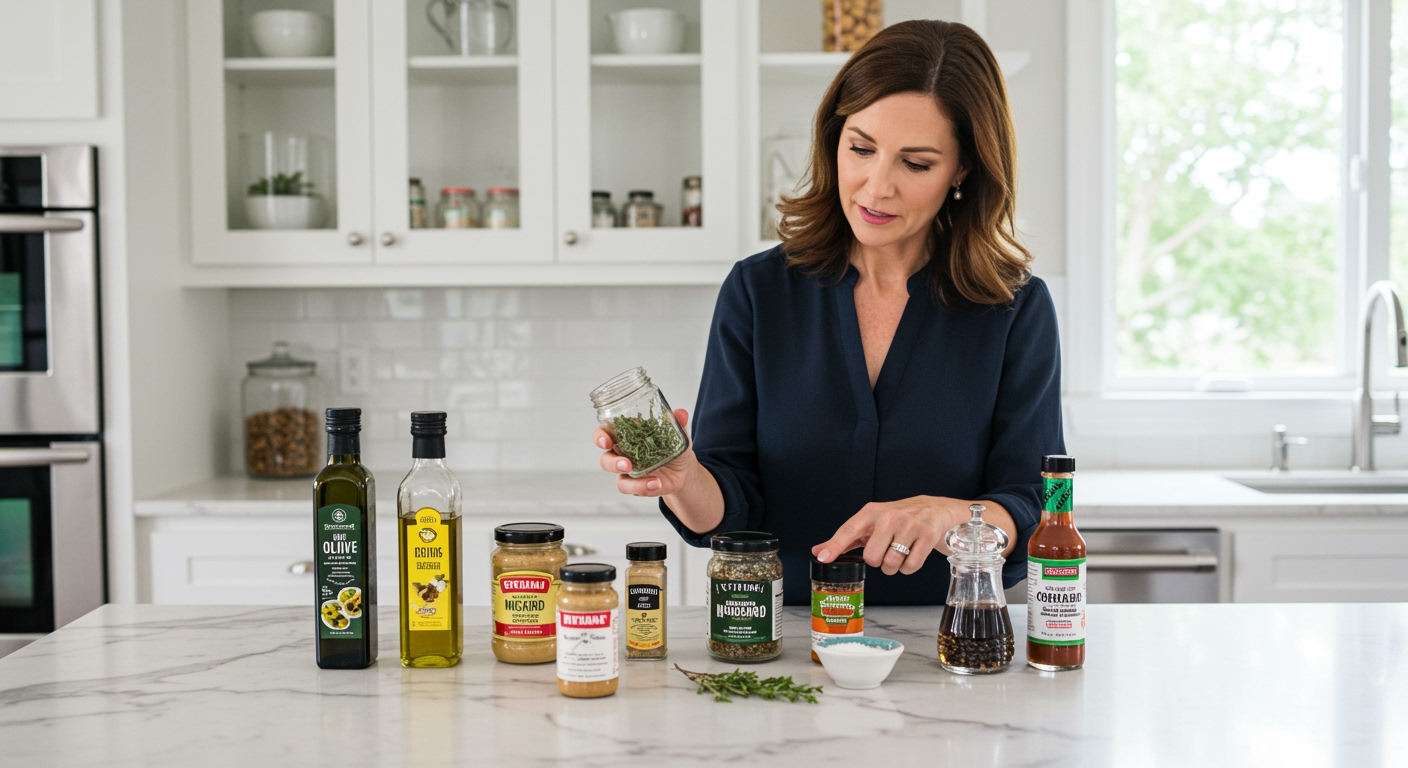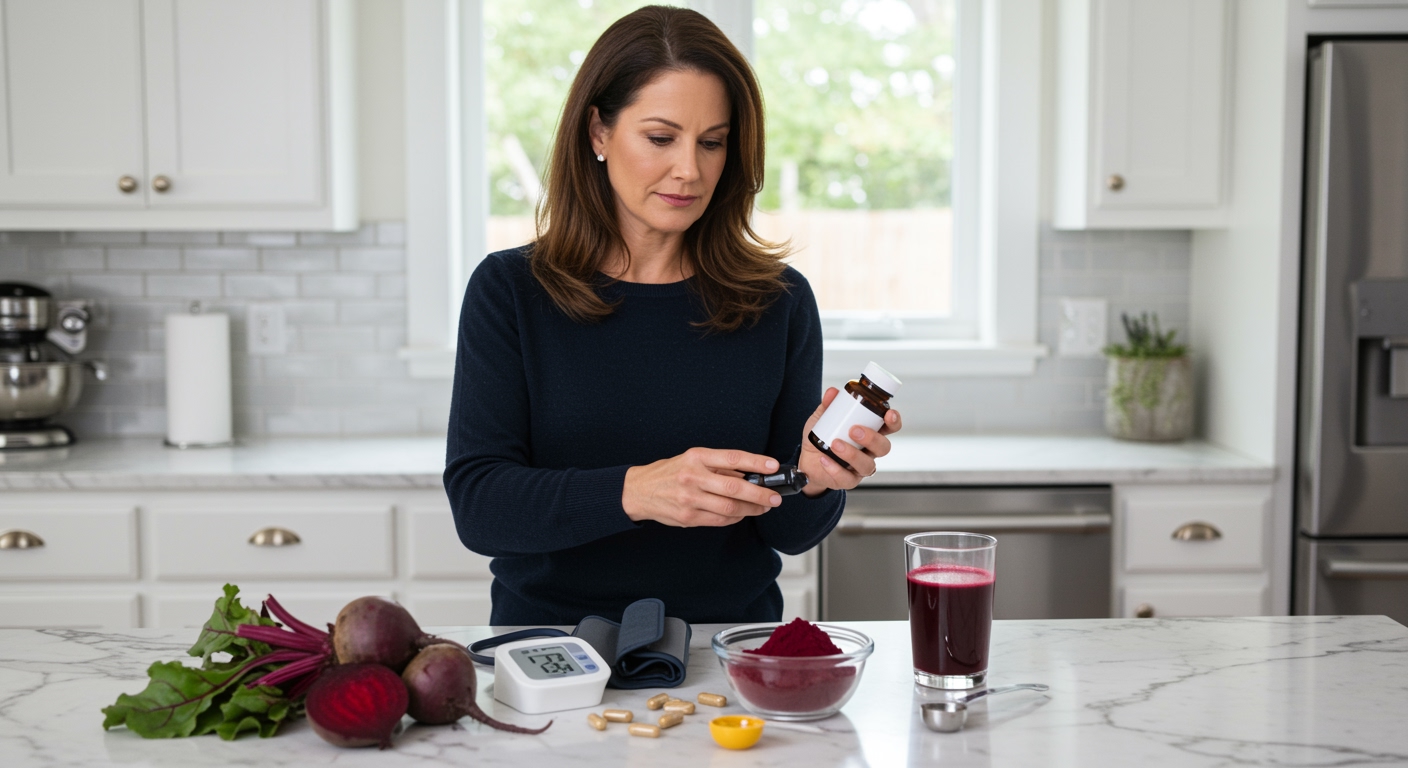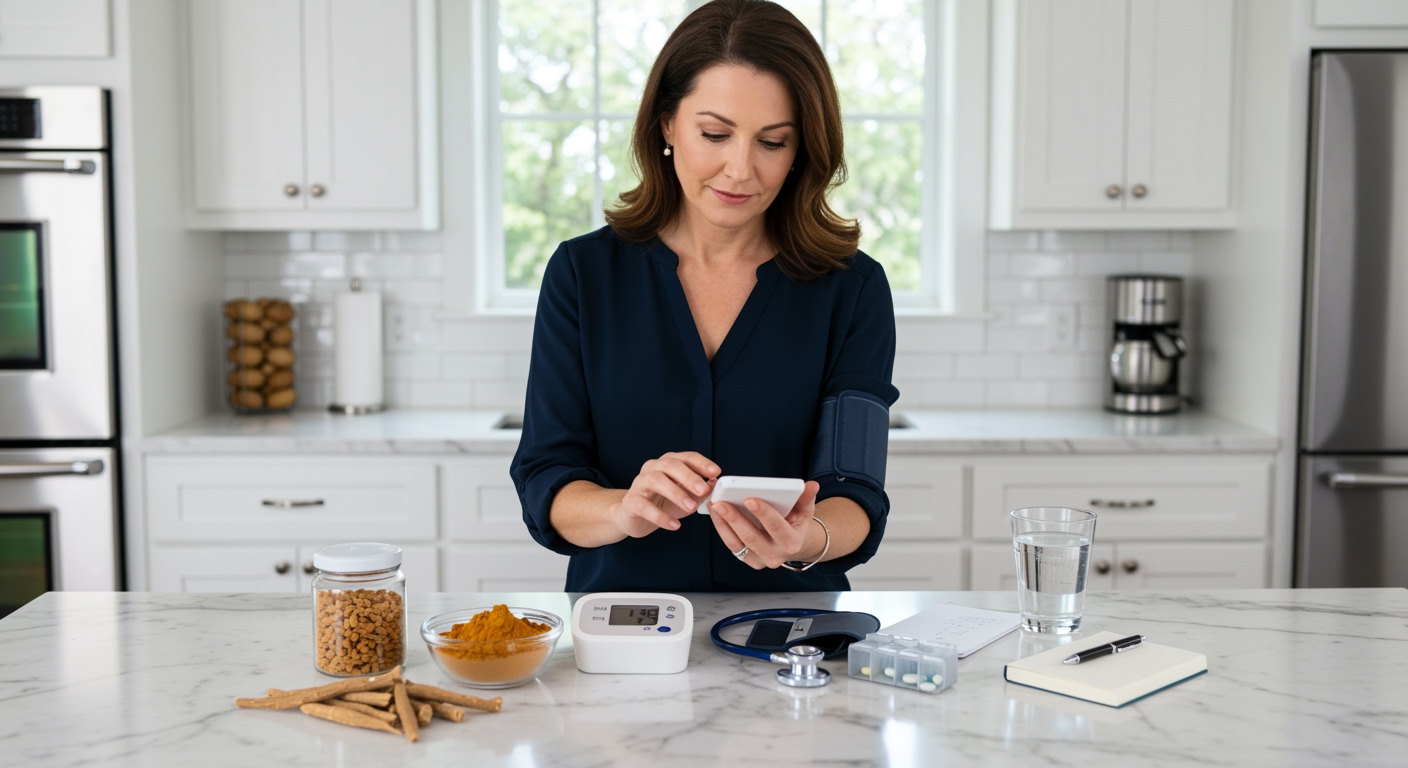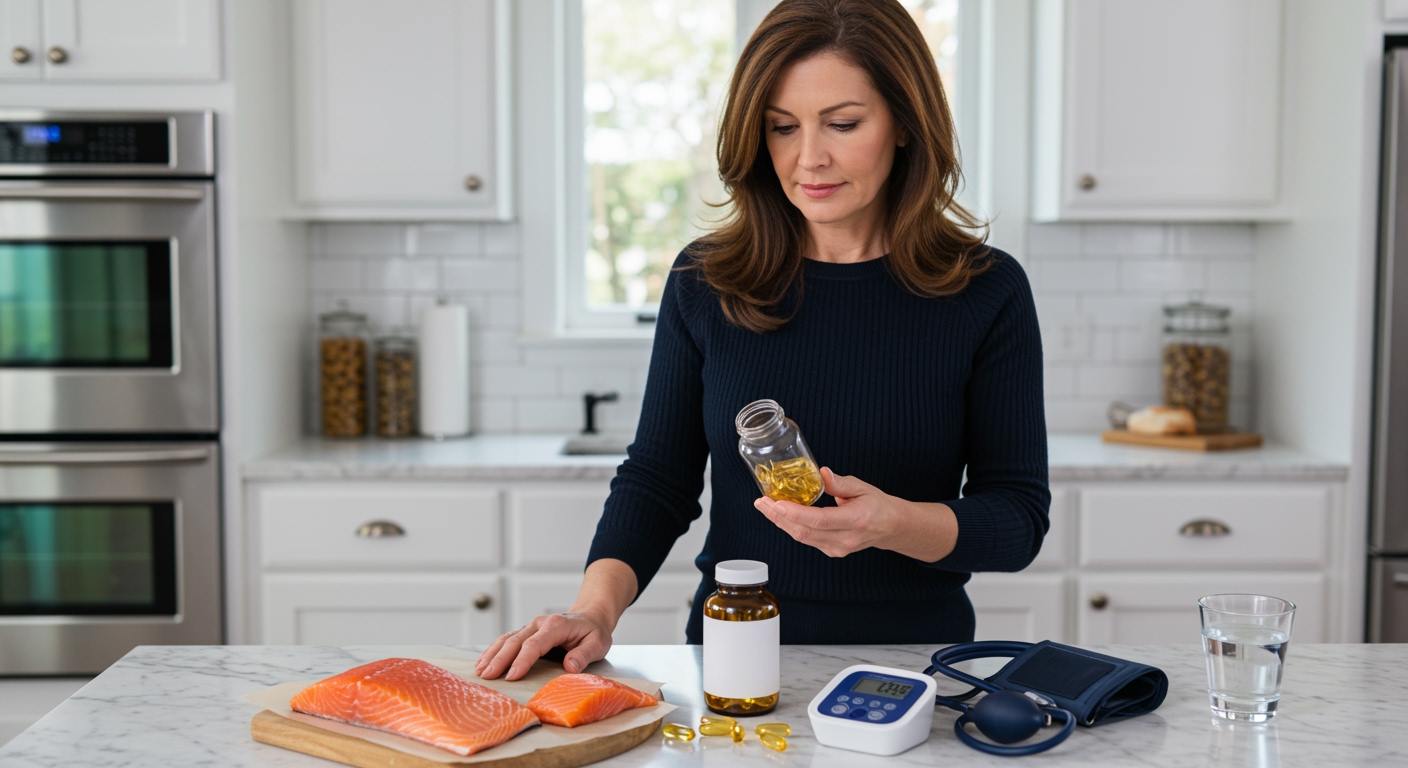✪ Key Takeaway: Hypertensive patients should avoid high-sodium condiments but can safely enjoy herbs, spices, and low-sodium alternatives.
Introduction
Your doctor just told you that your blood pressure is too high and you need to watch your sodium intake.
Now you are staring at your kitchen cabinet wondering if you need to throw away every bottle of sauce and seasoning you own.
Hi, I am Abdur, your nutrition coach and today I am going to explain which condiments you should avoid with high blood pressure and which ones are actually safe to use.
Which Condiments Are Dangerous for High Blood Pressure?
The biggest culprits in your condiment collection are the ones loaded with sodium.
Soy sauce contains about 1000 milligrams of sodium per tablespoon, which is nearly half your daily limit.
Teriyaki sauce, barbecue sauce, and steak sauce are equally problematic because they combine high sodium with added sugars.
Ketchup might seem harmless, but two tablespoons pack 320 milligrams of sodium plus high fructose corn syrup.
Salad dressings are sneaky sodium bombs that people often overlook when counting their daily intake.
Even pickle relish and olives contain enough sodium to spike your blood pressure if you eat them regularly.
The mechanism behind this is simple: excess sodium makes your body retain water, which increases blood volume and puts more pressure on your artery walls.
✪ Fact: One tablespoon of soy sauce contains more sodium than a bag of potato chips.
What About Salt-Free and Low-Sodium Options?
Low-sodium versions of your favorite condiments can be game-changers for managing blood pressure.
These products typically contain 25 to 50 percent less sodium than regular versions.
However, you still need to read labels carefully because low-sodium does not mean sodium-free.
Some manufacturers replace sodium with potassium chloride, which can actually help lower blood pressure.
Salt-free seasonings use herbs, spices, and natural flavor enhancers instead of sodium.
These alternatives work because they provide taste without triggering the water retention mechanism that raises blood pressure.
Your taste buds will adjust to lower sodium levels within two to three weeks of making the switch.
✪ Pro Tip: Look for condiments with less than 140 milligrams of sodium per serving.
Are There Heart-Healthy Condiments You Can Use?
Several condiments can actually support your cardiovascular health when you have high blood pressure.
Fresh herbs like basil, cilantro, and parsley contain antioxidants that help protect your blood vessels.
Garlic powder and onion powder provide flavor while offering compounds that may help relax your arteries.
Lemon juice and vinegar are naturally sodium-free and can enhance the taste of any dish.
Hot peppers contain capsaicin, which research suggests may help lower blood pressure naturally.
Extra virgin olive oil provides healthy fats that support heart health when used in moderation.
These options work by providing flavor without sodium while delivering nutrients that support healthy circulation.
✪ Note: Fresh herbs contain more beneficial compounds than dried versions.
How Much Sodium Should You Allow From Condiments?
The American Heart Association recommends limiting total daily sodium intake to 1500 milligrams for people with high blood pressure.
This means condiments should contribute no more than 200 to 300 milligrams of your daily sodium budget.
Most people consume 3400 milligrams of sodium daily, which is more than double the recommended amount.
Hidden sodium in condiments often accounts for 15 to 20 percent of daily intake without people realizing it.
Your kidneys can only process about 1500 milligrams of sodium efficiently before your body starts retaining excess water.
When you exceed this limit regularly, your blood vessels must work harder to pump the increased blood volume.
Tracking your condiment sodium intake helps you stay within safe limits while still enjoying flavorful meals.
✪ Fact: Reducing sodium by 1000 milligrams daily can lower systolic blood pressure by 4 to 6 points.
Can You Make Your Own Blood Pressure-Friendly Condiments?
Making homemade condiments gives you complete control over sodium content and ingredient quality.
A simple herb blend with dried oregano, thyme, and garlic powder can replace salt in most recipes.
Homemade salsa using fresh tomatoes, onions, and peppers provides flavor without added sodium or preservatives.
You can create a heart-healthy barbecue sauce using tomato paste, vinegar, and spices instead of high-sodium versions.
Mustard made from mustard seeds and vinegar contains minimal sodium compared to commercial varieties.
Homemade versions also avoid artificial preservatives and high fructose corn syrup found in many store-bought options.
The key is using acid from citrus or vinegar, heat from spices, and umami from ingredients like mushrooms to create satisfying flavors without salt.
✪ Pro Tip: Freeze homemade herb blends in ice cube trays for convenient portion control.
The Bottom Line
You do not need to eliminate all condiments from your diet when managing high blood pressure, but you must choose wisely.
Smart condiment choices can add flavor to your life without adding pressure to your arteries.
I would love to hear about your favorite low-sodium condiment discoveries or homemade recipes that have helped you manage your blood pressure while keeping meals delicious.
References
At NutritionCrown, we use quality and credible sources to ensure our content is accurate and trustworthy. Below are the sources referenced in creating this article:
- American Heart Association: Shaking the Salt Habit to Lower High Blood Pressure
- PMC: Salt and Hypertension Research
- Healthline: Foods to Avoid with High Blood Pressure
- Johns Hopkins Medicine: Low Sodium Diet and Lifestyle Changes for High Blood Pressure





